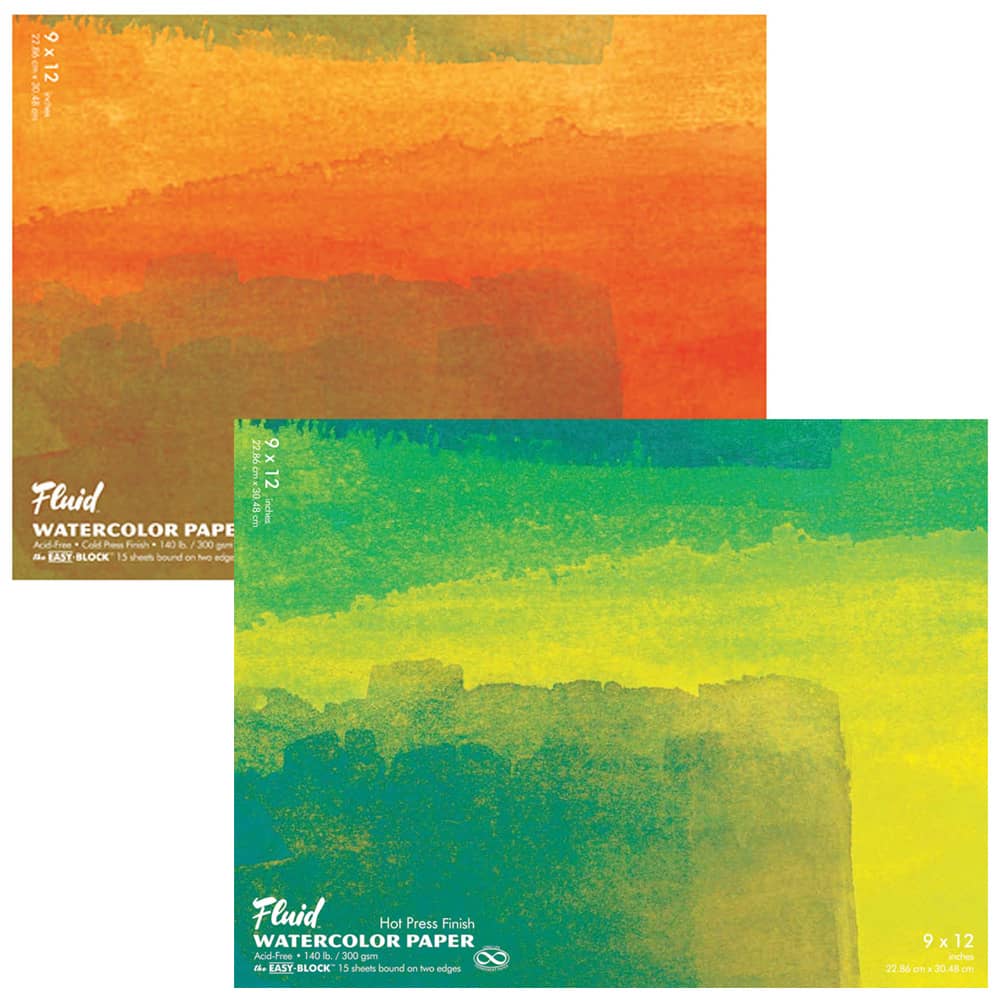Fluid Watercolor Paper
Are you tired of using watercolor paper that just doesn't live up to your expectations? Look no further than fluid watercolor paper. This high-quality paper is designed to bring out the best in your watercolor paintings.
Pain Points of Traditional Watercolor Paper
Traditional watercolor paper can be difficult to work with. It often requires stretching and taping down to prevent warping, which can be time-consuming and frustrating. The surface of the paper can also be uneven, causing the watercolor to absorb unevenly and creating unexpected results. Finally, traditional watercolor paper can be prone to tearing when wet, ruining all of your hard work. These pain points can be discouraging for artists who just want to focus on their craft.
What is Fluid Watercolor Paper?
Fluid watercolor paper is a modern solution to the pain points that come with traditional watercolor paper. The paper is designed to stay flat and sturdy without any stretching or taping required. The surface is even, allowing for an even distribution of watercolor paint. Finally, the paper is durable and able to withstand the wetness of the paint without tearing. By using fluid watercolor paper, artists can focus on their craft without worrying about the paper getting in the way.
Main Points about Fluid Watercolor Paper
Fluid watercolor paper is a high-quality alternative to traditional watercolor paper. Its smooth surface ensures an even distribution of paint, while its durability prevents tears and other issues. By eliminating the need for stretching or taping, fluid watercolor paper provides an efficient and hassle-free solution for artists looking to focus on their craft. With options like Fluid Watercolor Paper Easy Block, Fluid 100 Watercolor Paper Sheets, Blocks & Pochettes, and Global Art Fluid Watercolor Paper Easy-Block, artists have a variety of options to choose from.
Personal Experience with Fluid Watercolor Paper
When I first started experimenting with fluid watercolor paper, I was amazed by the difference it made in my paintings. The even surface allowed the paint to absorb exactly as I wanted it to, and the lack of warping meant I could focus on painting rather than struggling with the paper. As I continued to use it, I found that I was able to be more creative in my art because I didn't have to worry about the limitations of the paper I was using.
Comparison Between Fluid Watercolor Paper and Traditional Watercolor Paper
Unlike traditional watercolor paper, fluid watercolor paper is designed to stay flat and even without the need for stretching or taping. Traditional watercolor paper can also be prone to tearing, unlike fluid watercolor paper, which is durable and able to withstand the wetness of paint. By eliminating these pain points, fluid watercolor paper allows artists to focus on their craft without being hindered by the paper they are using.
How to Choose the Right Fluid Watercolor Paper
When choosing fluid watercolor paper, it is important to consider the weight, texture, and sizing. The weight of the paper indicates its thickness and durability, with higher weights being more durable. Texture refers to the surface of the paper, with options ranging from rough to smooth. Finally, sizing refers to the coating applied to the paper to prevent paint from soaking through. By considering these factors, artists can choose the perfect fluid watercolor paper for their needs.
Question and Answer
Q: Is fluid watercolor paper more expensive than traditional watercolor paper?
A: While the price of fluid watercolor paper varies depending on the brand and weight, in general, it is comparable to the price of traditional watercolor paper.
Q: Can fluid watercolor paper be used with other wet media, like acrylic or ink?
A: Yes, fluid watercolor paper can be used with other wet media, and its even surface ensures an even absorption.
Q: Is it necessary to use stretching or taping methods with fluid watercolor paper?
A: No, fluid watercolor paper is designed to stay flat and even without the need for stretching or taping.
Q: What is the best weight for fluid watercolor paper?
A: The best weight for fluid watercolor paper depends on the artist's preferences and the purpose of their painting. For beginners, 140 lb. is a good starting weight. For artists who want a sturdier paper or plan to layer wet paint, a higher weight like 300 lb. may be better.
Conclusion
Fluid watercolor paper is a modern solution to the pain points of traditional watercolor paper. By providing a flat, even surface that doesn't require stretching or taping, fluid watercolor paper allows artists to focus on their craft without being hindered by the paper they are using. With a variety of options to choose from, including Fluid Watercolor Paper Easy Block, Fluid 100 Watercolor Paper Sheets, Blocks & Pochettes, and Global Art Fluid Watercolor Paper Easy-Block, artists can find the perfect fluid watercolor paper to suit their needs.
Gallery
Fluid Watercolor Paper With Easy-Block | Watercolor Paper, Sketching

Photo Credit by: bing.com /
Fluid Watercolor Paper Easy Block - 140 Lb. Cold Press 12x12

Photo Credit by: bing.com / fluid 12x12
Global Art Fluid Watercolor Paper Easy-Block - Cold Press - 4" X 6
Photo Credit by: bing.com / global fluid watercolor paper easy cold block press jetpens
Fluid 100 Watercolor Paper Sheets, Blocks & Pochettes - Jerry's Artarama

Photo Credit by: bing.com / fluid pochettes jerrysartarama
Fluid Watercolor Paper Easy Block - 140 Lb. Cold Press 9x12" | EBay

Photo Credit by: bing.com / 9x12 fluid
